The 20 Most Expensive Cities in the US—And Why They Might Be Worth It

Photo: Getty Images
Some will look at a list of the most expensive cities in the US and see a warning sign to steer clear of these pricey places, while others eye lavish locales and feel motivated to make a move to an in-demand spot. As Hannah Jones, senior economic research analyst at Realtor.com, points out, “Many expensive areas are highly desirable, whether due to access to the beach, nature, or city life, which means that many residents find that the lifestyle justifies the expense.”
Whichever camp you’re in—or if you already live in one of these high-cost metropolises—it’s good to know what’s out there and how various cities compare. That’s why we dug into the most recent report of the “Most Expensive Places to Live in the U.S.” from U.S. News & World Report. Here, we take a look at the top 20 cities from the list to see what makes them so expensive. It’s worth noting that 12 of the top 20 are in California. Whereas transplants used to move to the Golden State in search of riches, it seems that nowadays potential residents should arrive with money already in the bank.
What makes a city expensive to live in?
The methodology used by U.S. News is based on “the median gross rent and annual housing costs for mortgage-paying homeowners of each metro area.” Sources for the data include the US Census Bureau, the US Department of Labor, and internal resources at U.S. News.
As for how often rankings like these might change, Jones says that while she doesn’t have the research to comment on shifts from year to year, expensive cities tend to remain so for a while. “Based on listing price data,” she says, “the San Jose, LA, Oxnard, San Diego, and San Francisco metro areas were among the most expensive housing markets in the US in February from 2017 through 2024.”
What city has the highest cost of living?
With a median home price of $919,507 and a median monthly rent of $1,842, San Diego landed the number one spot on the U.S. News list. Jones says, “California metro areas consistently top the list of most expensive housing markets in the US, so it's no surprise to see San Diego at the top of this year’s list.”
Is it worth it to live in an expensive city?
“People consider far more than just affordability when deciding where to call home, ranging from the quality of the schools and overall diversity to the weather conditions and career opportunities,” says Zach Chatham of Niche, a company that creates their own rankings, including Cities with the Lowest Cost of Living in America. Cost alone may not be the deciding factor. San Francisco and Seattle, for example, landed on the U.S. News list of most expensive places as well as on Niche’s list of Best Places to Live in America. Chatham says, “Seattle and San Francisco are both diverse cities and rank as strong destinations for young professionals, with both cities ranking top three nationally…. People interested in these locations, and others like them, have plenty to consider beyond just cost.”
What should you consider when moving to an expensive city?
“Those looking to move to an expensive city should consider the financial impact of not only shelter, but also other expenses such as transportation, dining, and entertainment,” says Jones. She also points out that renting may be the way to go. “Based on the recent Realtor.com rent vs buy report, renting is more affordable than buying in all 50 of the 50 largest US metro areas,” she says. “Renting in a high-priced market can be a great lever for controlling expenses, even in a high-rent market.”
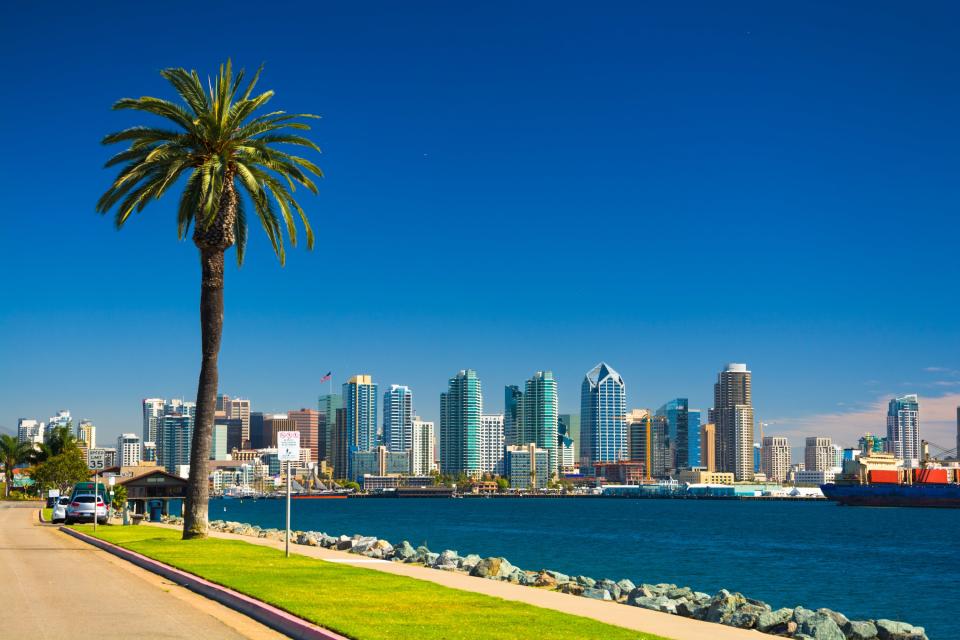
San Diego skyline with Palm Tree, Bay, and Blue Sky
Photo: Getty Images/David Liu1. San Diego
With year-round warm temps, beaches, and miles of both coastal and canyon hiking trails, San Diego offers a highly desirable lifestyle. No doubt this drives up home prices, which are substantially higher than the national median sale price. As U.S. News points out, locals call this the "sunshine tax,” or the added cost of living in great weather.
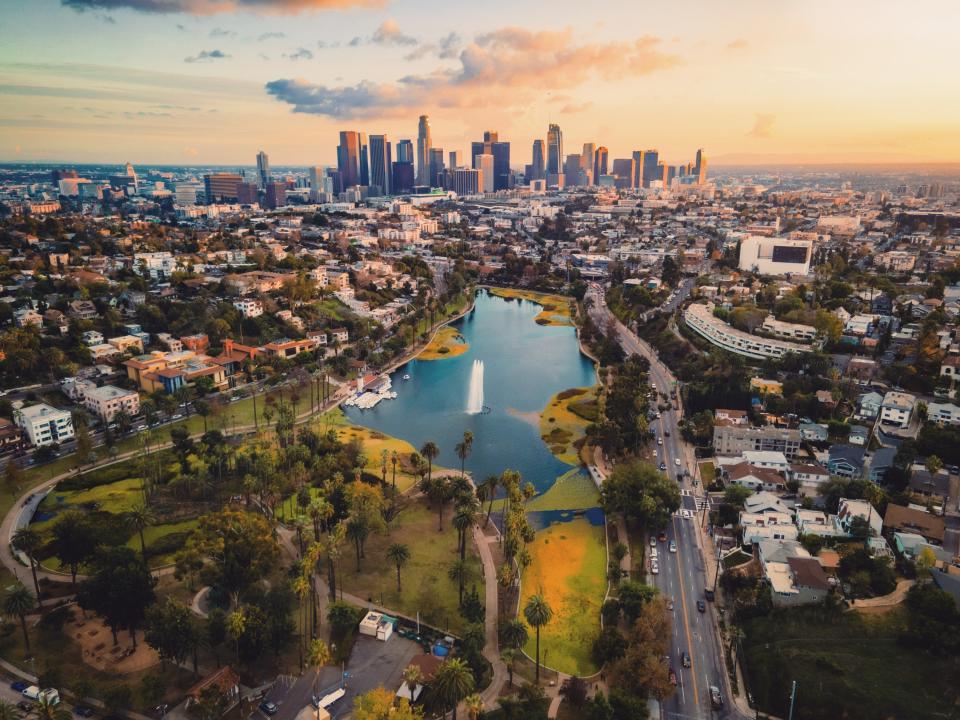
Downtown Los Angeles Skyline View from Echo Lake Park
Photo: Getty Images2. Los Angeles
In addition to desirable weather, LA’s entertainment and cultural offerings—including dozens of art museums, world-famous music venues, and Michelin-starred restaurants—are major draws. Residents compete for limited housing, driving up the cost—way up, in some cases. Realtor.com recently shared that the LA neighborhood of Bel Air has one of the most expensive zip codes in the country, with a median list price of $8,625,000.
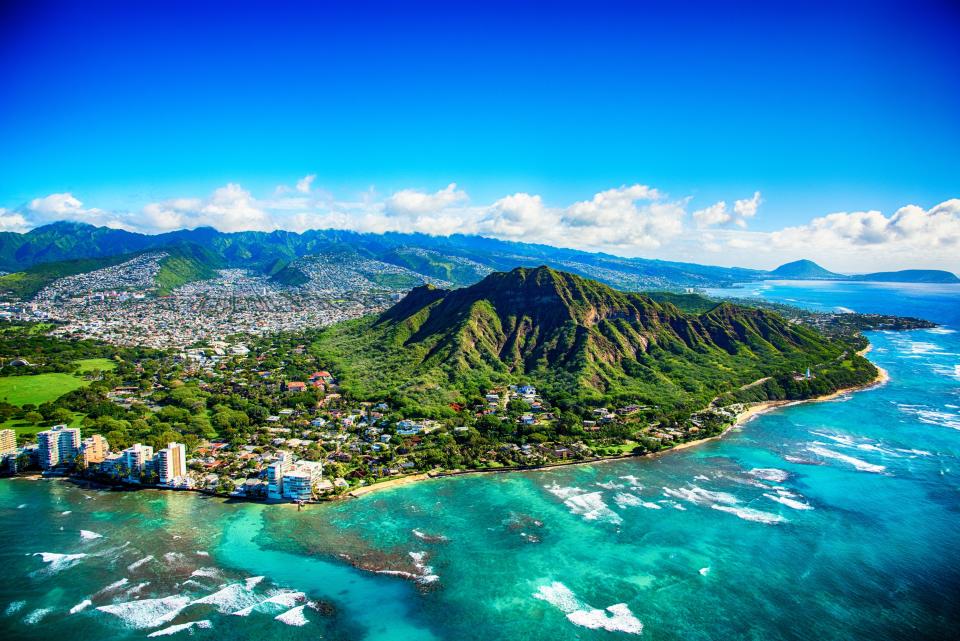
Diamond Head State Park Aerial
Photo: Getty Images3. Honolulu
Get access to both a tropical paradise and a major metropolitan city in Honolulu. Hawaii’s capital is home to the Honolulu Museum of Art, with a permanent collection of more than 60,000 pieces, and the Iolani Palace, a 19th-century royal home that’s open to the public for tours. Residents also enjoy festivals throughout the year, including the Honolulu Festival in March—a three-day celebration of local art, music, and dance.
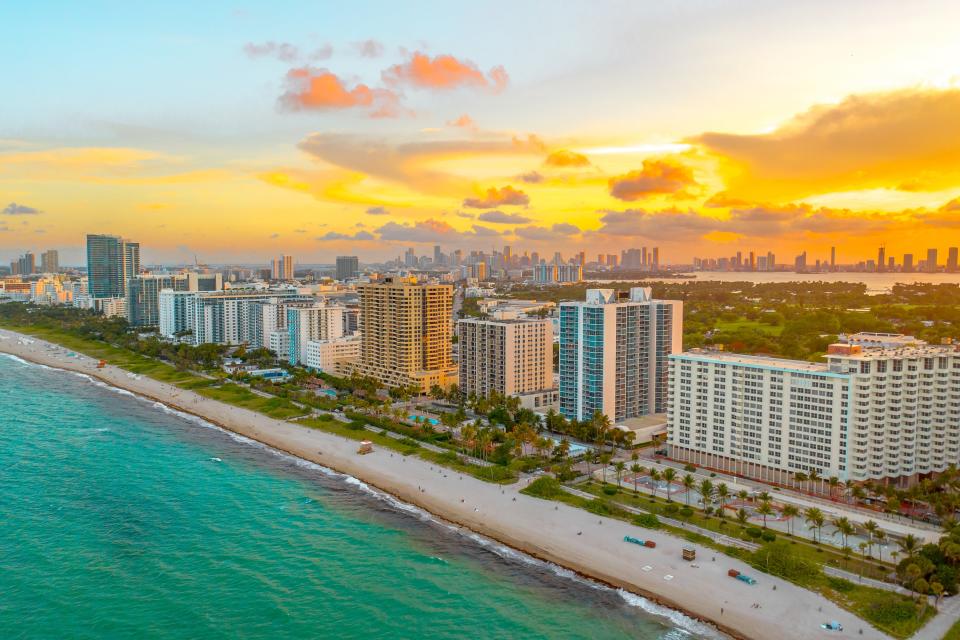
Gorgeous aerial view of sunset in Miami Beach, Florida from a drone
Photo: Getty Images4. Miami
Art Deco devotees flock to Miami, where lucky homeowners can nab a property in the city’s celebrated style—or a modern spin on it. But even if you don’t live in an Art Deco home, you can frequent Miami’s Art Deco Historic District. The neighborhood has over 800 early-20th-century buildings, many of them pristinely restored in pastel hues.

Buildings Coastline Pacific Ocean Santa Barbara California
Photo: Getty Images/William Perry5. Santa Barbara, California
Mediterranean style homes, beaches, mountains, and vineyards within reach—there’s a reason so many of the country’s ultrarich have made Santa Barbara home. Called the “American Riviera,” Santa Barbara has many of the same lifestyle draws as nearby Los Angeles, but in a smaller city with much less congestion.
6. San Francisco
Recent research has shown that everything from housing to transportation to groceries cost more here than the national average. But if you can swing the expenses, San Francisco also lands on lists for best places to live in the US thanks to its museums, theaters, and cultural centers. Also on the bright side, residents here earn significantly more per hour per year than they would in other major cities.
7. Salinas, California
The birthplace of The Grapes of Wrath author John Steinbeck and part of the region known as “the salad bowl of the world,” Salinas has plenty to offer in literary esteem and agriculture. But it’s not the books or veggies driving up costs here. Like so much of California, the culprit is real estate prices.
8. Santa Rosa, California
If you can swing the higher-than-national-average home prices here, you can enjoy a wine wonderland that’s only 55 miles north of San Francisco. Part of Sonoma County, Santa Rosa is home to tasting rooms galore, museums, and multiple theaters for the performing arts. It’s also the old stomping grounds of horticultural legend Luther Burbank, whose Greek Revival home is now open to the public.
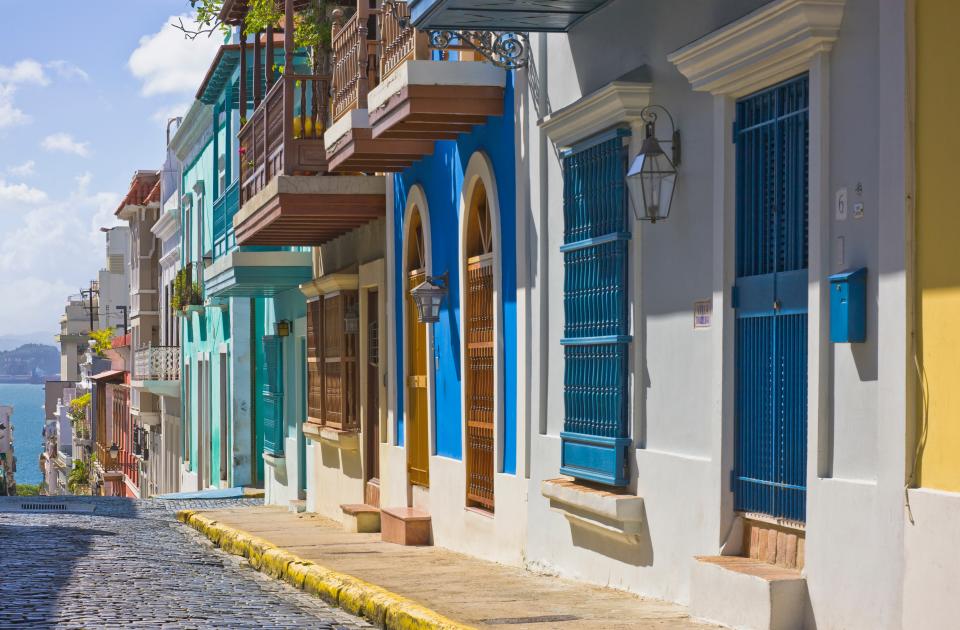
Calle San Justo (San Justo Street), Old San Juan, Puerto Rico.
Photo: Getty Images/David Madison9. San Juan, Puerto Rico
With a median monthly rent of $551, rental prices in San Juan are substantially cheaper than in most major cities on the mainland. It’s the average energy bill here that landed San Juan on this list. Still, Caribbean beaches, an electric nightlife, and the charm of cobblestone streets that line pastel-colored buildings might be worth it.
10. Vallejo and Fairfield, California
Housing prices in these two Northern California cities, just 18 miles apart, are higher than the national average, but lower by California standards. That makes both places ideal residences for Bay Area workers looking to pay less. Their locations also put them closer to Sonoma and Napa wine countries, though with wineries of their own plus an active arts scene, locals don’t necessarily have to head out of town.
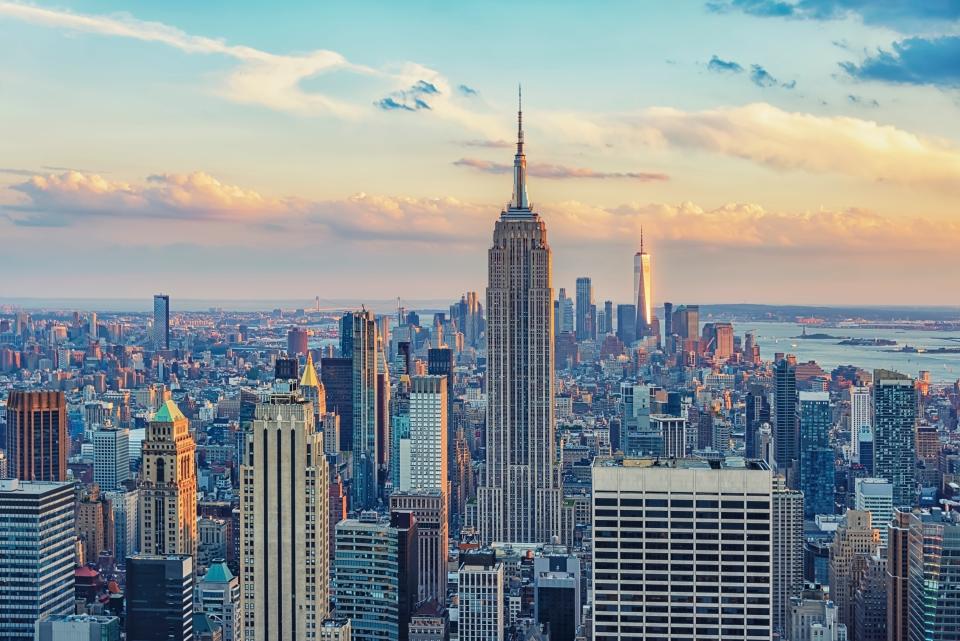
The skyline of New York City, United States
Photo: Getty Images11. New York City
Affordable housing has long been an issue in the Big Apple, but lately rents have skyrocketed. Earlier this year, the city’s comptroller, Brad Lander, noted that median asking rent on publicly listed apartments was $3,500 per month citywide, which would require a household to earn $140,000 or more to not be rent-burdened. And yet, for many, that's a price worth paying to have Central Park in your backyard, The Met as your local museum, and Broadway-caliber talent for regular entertainment.
12. Boston
In 2022, Boston made headlines for jumping ahead of San Francisco to land at number two on Zumper’s national rent report (NYC took number one). In the latest version of the same report, Boston has mellowed out to position number four and a median monthly rent price of $2,850 for a one-bedroom place. That could mean a little extra spending money for boating on the Charles River, visiting the Museum of Fine Arts, and catching a performance by the Boston Ballet.
13. Seattle
The Seattle lifestyle is an appealing mix of both indoor and outdoor pursuits. Locals get an eyeful of contemporary art inside at the Seattle Art Museum as well as in the open air at the Olympic Sculpture Park. Waterfall hiking and winery tours are within reach, as are dozens of storied venues for catching live music. And while big tech companies, such as Amazon and Microsoft, bring another draw—job opportunities—they also invite competition for housing, driving up costs.
14. San Jose, California
The unofficial capital of Silicon Valley, San Jose is a natural home base for the thousands of tech employees that work in the area. Google is around 15 miles away in Mountain View, Netflix is roughly 11 miles away in Los Gatos, and it’s about the same distance to Apple in Cupertino. The average annual salary here is one of the highest in the country, which is good because the median home price is a cool $1.5 million, according to U.S. News.
15. Sacramento, California
While Sacramento is more expensive than the national average, housing here is cheaper than in other major California cities. That means residents wanting to enjoy the Golden State without breaking the bank have options. And California’s capital—with its 250 days of sunshine a year and more than 200 public parks—is a good one for nature lovers.
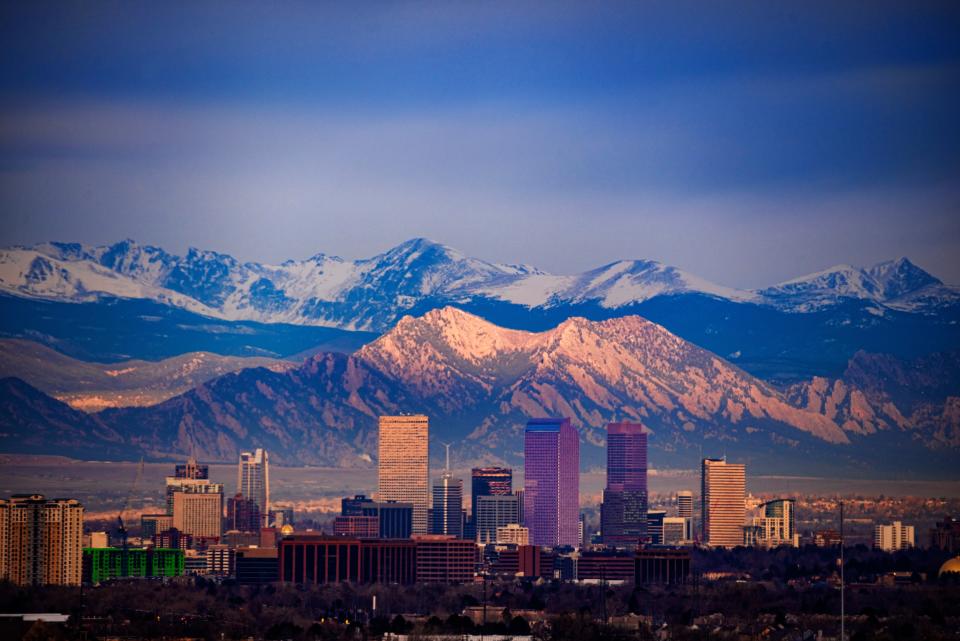
Denver and the Flatirons
Photo: Getty Images/Brad McGinley Photography16. Denver
A population boom in recent years has driven up housing costs in Denver. But there’s a reason all those transplants have been lured to the Mile High City, which landed within the top 100 of U.S. News’s Best Places to Live list. Not only does Denver have nearly 20,000 acres of city and mountain parkland, it also has an active arts scene with multiple creative districts devoted to galleries, street murals, and live music venues.
17. Stockton, California
While residents here tend to pay more for everyday expenses like groceries and transportation compared to the national average, Stockton does offer a more affordable alternative to other Northern California cities, such as San Francisco and San Jose. The area is surrounded by farms, which means there’s no shortage of fresh produce, and there are still outlets for creative exploration. The city’s Haggin Museum, for example, features 19th- and 20th-century art.
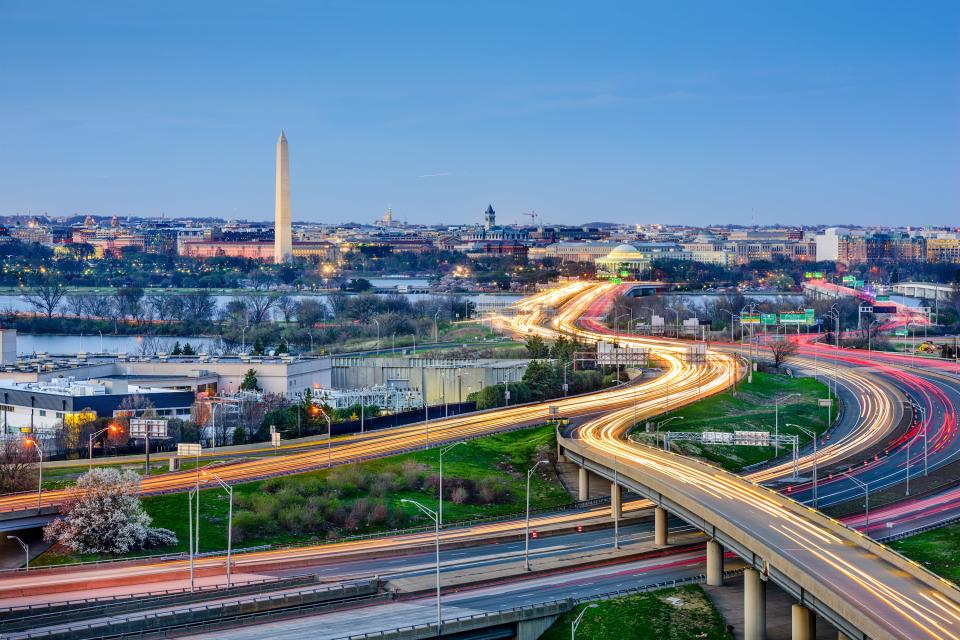
Washington DC Skyline
Photo: Getty Images18. Washington, DC
Recent research found that it would take an annual salary of $99,424 for a single person to live comfortably in DC (that total jumps to $275,642 for two working adults with two kids). Even though it’s expensive, the high cost of living in the nation’s capital does put you in proximity to world-class cultural institutions, including the National Museum of African American History and Culture, the American Indian Museum, and the John F. Kennedy Center for the Performing Arts.
19. Modesto, California
It might be better known as the hometown of director George Lucas (story has it the town’s love for cruising helped inspire his film American Graffiti), but Modesto is also famed for its modernist architecture. From the late 1920s to the early 1970s, architects flocked to the area to lend their talents to the cutting-edge designs. Today, you can enjoy modernist architecture at local restaurants, office buildings, and even the supermarket—something that might make the California prices worthwhile.
20. Fresno, California
Costly California prices landed Fresno on this list, but like Modesto and other inland locales, the housing here is more affordable than the state’s coastal cities. Farmland and fresh produce abound in Fresno, as do festivals—one favorite is the Kingsburg Swedish Festival, which celebrates Scandinavian entertainment, food, and design. Plus, an influx in population has brought along with it new nightlife venues and eclectic dining options.
Originally Appeared on Architectural Digest

